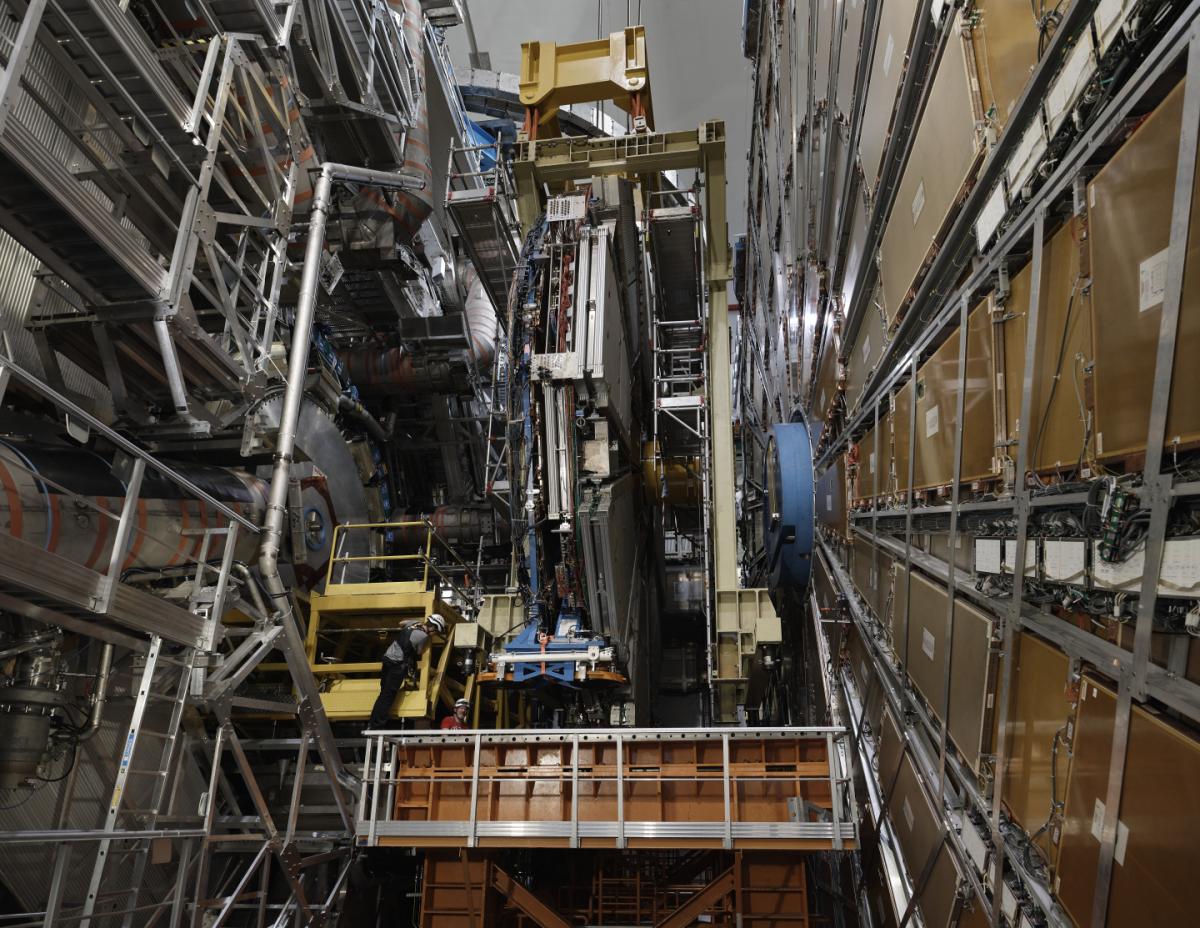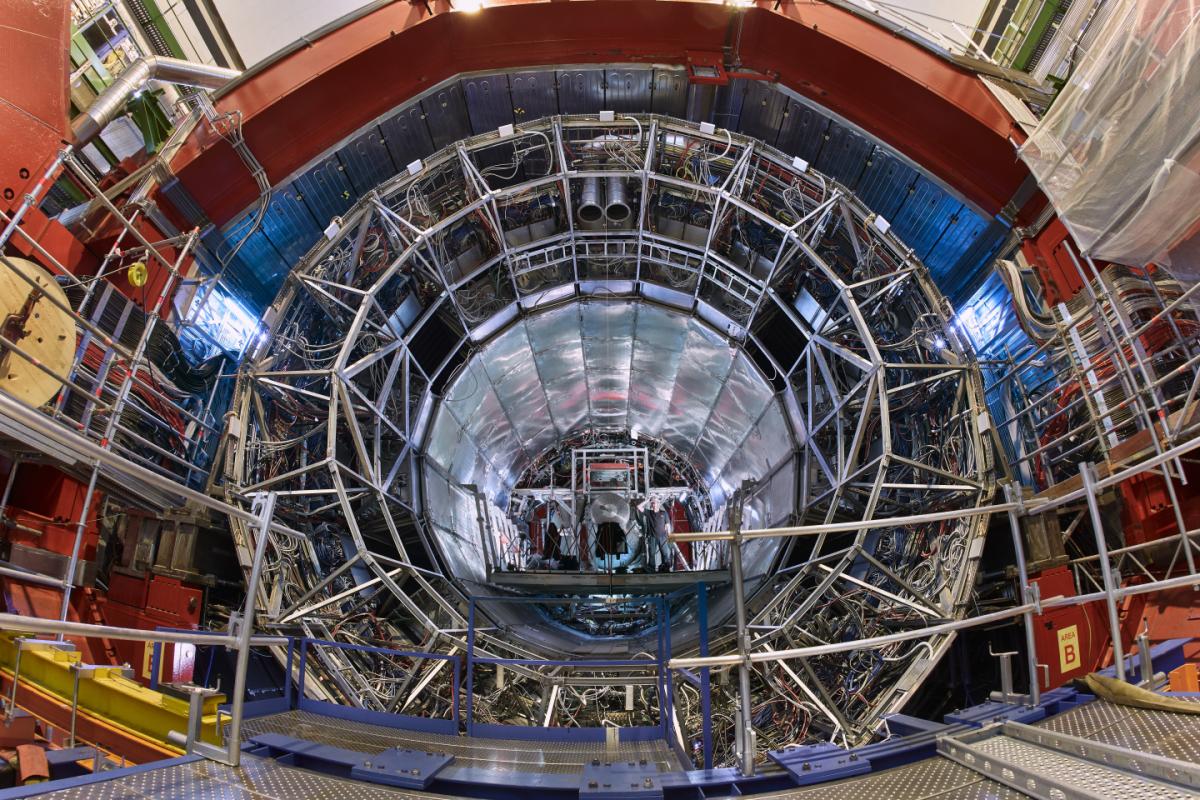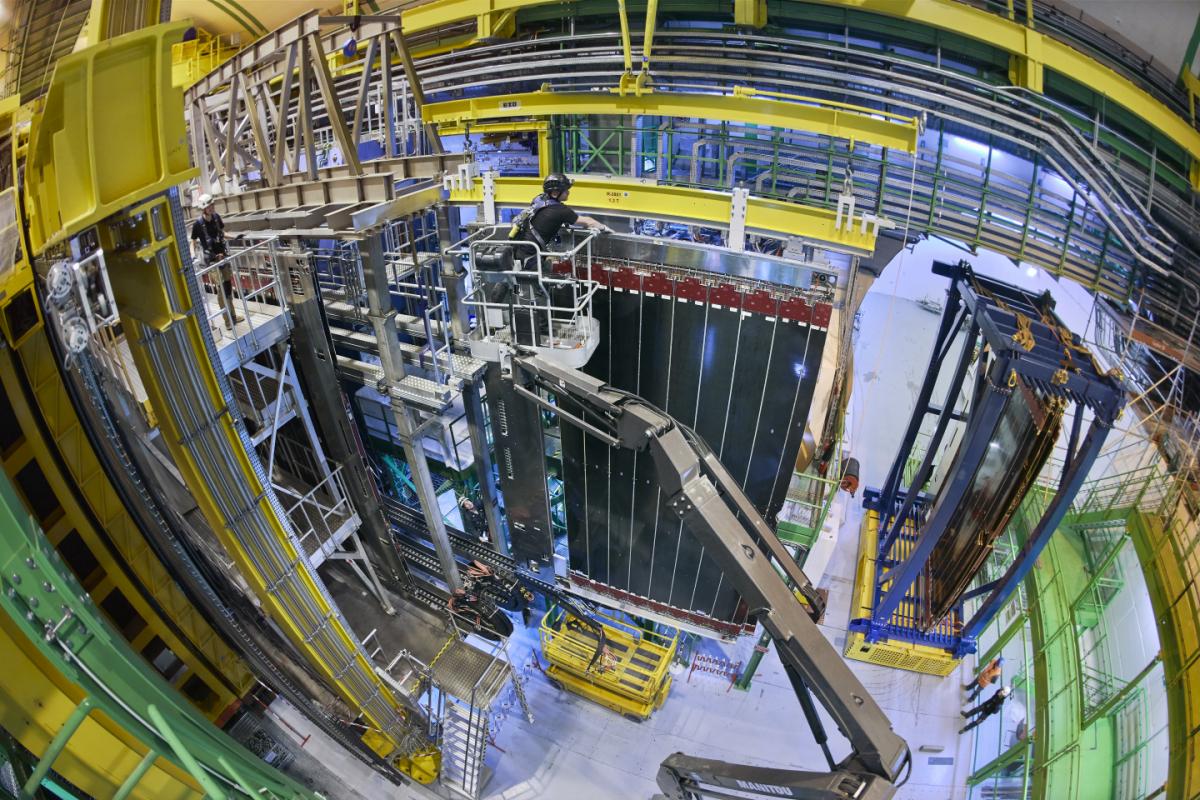LHC experiments ramp-up activities
Around the world,research centres, laboratories and universities have closed as a response to the COVID-19 pandemic — forcing an increasing number of researchers to work from home. Researchers teleworking coordinated with colleagues who had to continue working in the lab to ensure continuation of critical activities as well as a smooth restart of operations on site. As discussed in the previous issue the "CERN against COVID-19" taskforce has been established to coordinate different iniatives to help fight this public health crisis. Many groups from the EP department and the LHC experiments contributed with resources, equipment and ingenuity. In addition, certain technical activities related to the ongoing upgrades of the experiments continued even in the face of the lockdown, respecing of course all the precautionay measures necessary in the face of the pandemic.
As of the 18th of May, CERN has gradually restarted activites on-site gradually increasing the number of people with on-site access. In the past weeks, teams from the CERN management and the experiments work together to mitigate the impact from the COVID-19 pandemic and set up a new schedule for LS activities. First activities have started in the caverns of the four LHC experiments as well as in a number of workshops around CERN. However, planning remains challenging as the global COVID-19 situation is still evolving and travel restrictions remain at place for many areas; especially outside Europe. In this issue we have asked from the technical teams of the four LHC experiments to give us a brief summary of current activities and the next steps planned over summer. As you will read, though the upgrade work is restarting, certain difficulties remain that call for big changes in the working style and are absolutely essential to combat this outbreak. As the EP department plans to return to full activity over the next months, our thoughts go out to those touched by the pandemic.
ATLAS collaboration revamps activities
by Ludovico Pontecorvo

During the lock down, many activities related to the ATLAS detector upgrade were performed remotely, among them the development of the firmware for two of the major Phase-I upgrade projects: the New Small Wheel trigger, and the Liquid Argon Calorimeter trigger electronics. Specifically, already from the 4th of May, few pilot activities were prepared for the re-start. These included a few items for the New Small Wheel and a short intervention to allow progress in the commissioning of the Near Stations of the AFP detector that were installed just before the lock down.
In the meantime, the ATLAS safety team defined the procedures for the delivery of personal protective equipment (PPEs) and started to analyse the COVID-19 associated risks for all of the activities that were due to start on the 18th of May. Since after the 18th of May, the number of people allowed into CERN was limited, ATLAS identified a few high priority tasks to be performed. The Liquid Argon renewal of the front-end electronics started quite efficiently; refurbished front-end boards were installed in two crates and two other crates had their backplanes exchanged and are now ready to be filled with upgraded boards. The New Small Wheel activities also started in several CERN locations (buildings 180, 191 and BB5). Good progress has been achieved both on the MicroMegas and on the sTGC integration aiming to have by mid July three additional double wedges installed on the A-side New Small Wheel.
Work has also re-started on the qualification of the new power supplies of for the SCT tracking detector, on the maintenance of the Tile calorimeter and on the preparation for the installation of new muon chambers in the muon barrel toroid region, as well as on the TDAQ upgrade and maintenance. Within the Phase-II program, activities have started on the ITk (the new all-silicon tracker) and on the Tile calorimeter upgrade. It is also noteworthy that the so called Milestone-1 (M1) week (the first week of re-commissioning of the full detector) has already taken place, fully remotely at the end of May.
The COVID-19 precautions and the use of PPEs have certainly a relevant impact on the efficiency of the work, but all the teams are very eager to come back to work and so far have adapted extremely well to the new situation.
ALICE gears up for LS2 upgrades
by Werner Riegler

Beginning of March 2020 it started to become difficult to find a parking spot at the ALICE experiment site, indicating the ramp up of activities that should have led to the start of the detector installation campaign for the LS2 upgrade of the ALICE detector in mid April. On March 17th all this came to a grinding halt, when CERN went into lockdown due to the Covid-19 crisis. For the following weeks, a daily inspection tour through the cavern and the surface buildings was the only human activity seen at the site.
This however does not mean that all ALICE upgrade activities came to a halt – on the contrary. Software development for the new O2 detector readout and online reconstruction system continued at full steam. It is now in a state that allows the final definition of the computing hardware, detailed dimensioning of the computing farm and large scale data challenges. Also, the industrial production of electronics components for the ALICE upgrade, specifically the Common Readout Units, continued without interruption. The detector groups used the time to advance on firmware, software for detector readout, detector control and commissioning, which is all being put in action now that pre-commissioning activities are restarting.
During LS2, ALICE is installing a major upgrade that will allow continuous readout of heavy ion collisions at 50kHz, online reconstruction and compression of the events and subsequent storage of all events. A new silicon tracker based on ultra-thin MAPS sensors, new readout chambers for the TPC based on GEM detectors, a new fast interaction trigger detector and upgraded readout electronics for all subdetectors will in addition boost the measurement precision of the ALICE detector.
Around middle of May 2020, detector commissioning activities were gradually re-started and they should be close to pre-Covid levels by end of July.
The first detector that will move to the cavern this summer is the TPC, which is at this moment in the final pre-commissioning phase in the large cleanroom at the experiment site. This will be followed by the installation of the central beampipe and the ‘Miniframe’, a large service structure that is being finalized at this moment. The new silicon trackers that are currently being commissioned on the surface will then follow early 2021. In parallel, the electronics upgrades of all other subdetectors is ongoing.
The arrival of the online computing hardware at the beginning of 2021 should then allow an extended commissioning period of the brand-new ALICE detector before the closure of the cavern.
The fact that the production and construction of the major components for the ALICE upgrade is finished and that they are ‘in hand’ at CERN for pre-commissioning and installation should limit the dependence of the ALICE schedule on Covid-19 related closures of companies and university institutes. Travel restrictions of ALICE collaborators will therefore represent the biggest source of schedule uncertainty in the next months. Over the summer we expect to see more workpackages approved increasing the number of accesses to P5 and offices with managed timesharing to respect distancing rules. The exact management of the limitation of people present on CERN sites, and the full details of the authorization process, are still under discussion.
CMS restart preparation after COVID-19 lockdown
by Mar Capeans Garrido and Wolfram Zeuner

LHCb upgrade continues at a fast pace
by Heinrich Schindler and Augusto Sciuccati

While activities on the CERN site were reduced to a minimum during the closure, work on the LHCb LS2 Upgrade continued nevertheless, shifting focus on firmware and software development, drafting work and other tasks compatible with teleworking. Work on site has been resumed gradually, starting at the beginning of May with a few selected “pilot” projects, both on the Meyrin site and at Point 8. These activities included, for instance, the commissioning of photodetector columns for the upgraded RICH, the installation of servers in the new modular data centre, the systematic replacement of connectors in all Maraton low-voltage power supplies, and a cleaning campaign of the CO2 cooling plants in the Point 8 assembly hall and the cavern. The pilot phase also saw an important milestone for the upgrade of the LHCb Vertex Locator (VELO) achieved, namely the installation of the new RF foil separating the secondary detector vacuum from the primary vacuum of the LHC.
Before the start of each activity, dedicated safety reviews (“virtual VICs”) were held via videoconference to discuss the COVID-19 related risks and mitigation measures specific to the task, such as adapting procedures (e. g. to minimise working in close contact) or using additional protective equipment (gloves, face shields) where necessary.
After the 18th of May, the VELO, Upstream Tracker (UT) and Scintillating Fibre (SciFi) Tracker teams restarted assembly and commissioning activities on the surface, while work in the cavern continued initially with the installation of electronics for the calorimeter and muon systems as well as the installation of a new “beam plug” inside the hadron calorimeter. During the coming months, one of the main priorities regarding the activities in the cavern will be the restoration and consolidation of the LHCb dipole magnet. With still only a fraction of LHCb collaborators being able to come to CERN, the strong support from CERN groups (within EP and from the accelerator sector), which has been key during the startup phase, will continue to be essential in the near future.
Note: Archive Photos from LS2 taken before the COVID-19 shutdown of activities. Credits@CERN
